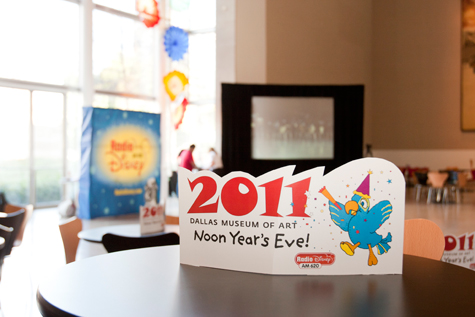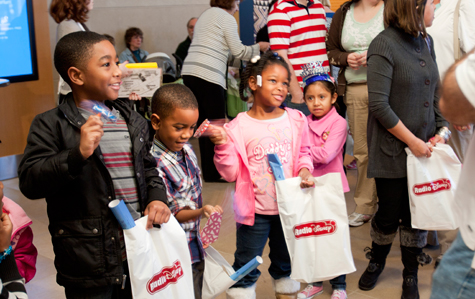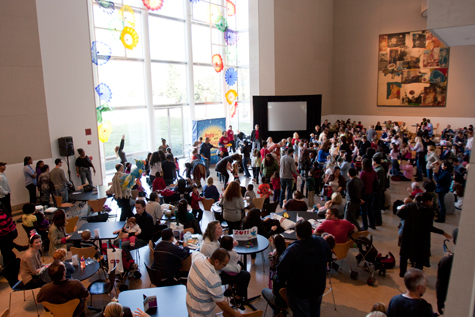For the past four years, Garland ISD has committed to bringing every fifth-grade student to the DMA for a one-hour docent-guided visit. Such an endeavor requires an extensive amount of time, resources, and coordination of staff, teachers, students, and docents. This impressive undertaking is possible thanks to Brenda Hass, Fine Arts Coordinator for Garland ISD.
What is your role with Garland ISD?
I am the Fine Arts Coordinator; I work with our K-12 art and theater program and our elementary music program.
Describe your relationship with the DMA.
I began working with the DMA when I was in another school district and learned about the tour program. When I came to Garland, one of the things I set in motion right away was to make an arrangement for all fifth-graders to come to the DMA for tours that align with social studies TEKS. It’s been a great relationship.
How, and why, do you manage such a large task?
We do it because we feel it’s important. Many children wouldn’t have the experience of coming to an art museum if we didn’t provide it. The majority of our forty-seven elementary schools are considered Title 1 and are located in lower socioeconomic areas. Whatever the students’ backgrounds are, we want to them have the opportunity to visit. We choose to put our money and our time here.
What is the most memorable thing that has happened during these tours?
Every year after our DMA tours in January, I always receive an email from a classroom teacher who had never visited before, wanting me to know what an amazing experience it was for his/her children and thanking me for providing the transportation. I think a lot of people who didn’t get to visit museums as a child don’t go to museums as adults. But once they have an opportunity, they don’t want to miss it.
What is your favorite part of your job?
Being with children. If it’s theater, watching them perform in a show. With art, I may be helping them organize exhibitions of their work. In music, I’m watching a program or working with our children’s chorus. Whatever role we have in administration, we have to continue being around the children. That’s what keeps us fresh and keeps us on the cutting edge of education.
Also, I am passionate about making sure our students have a museum experience. I think that everybody, child or adult, should do the same.
Melissa Nelson
Manager of Teaching in the Community
















